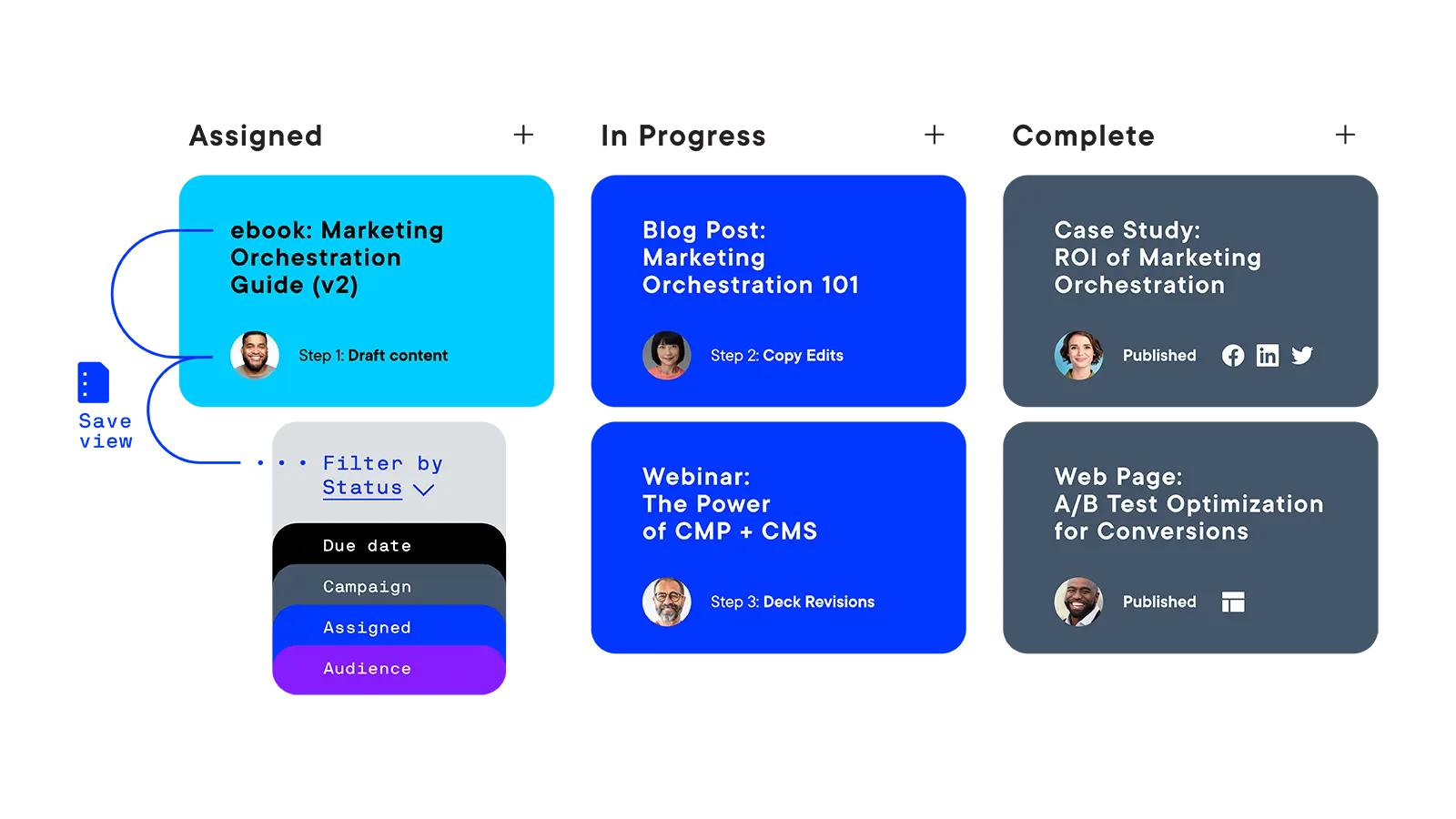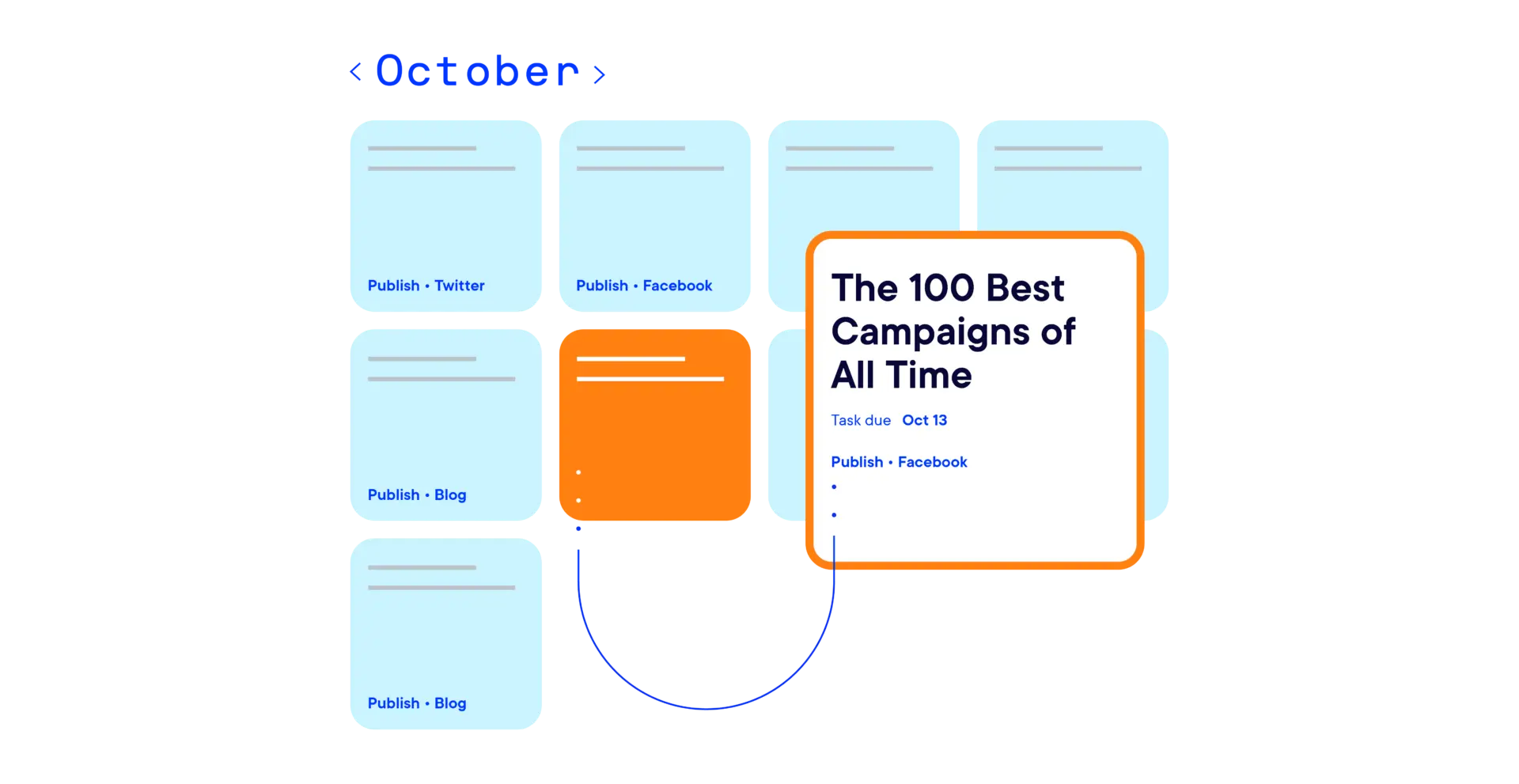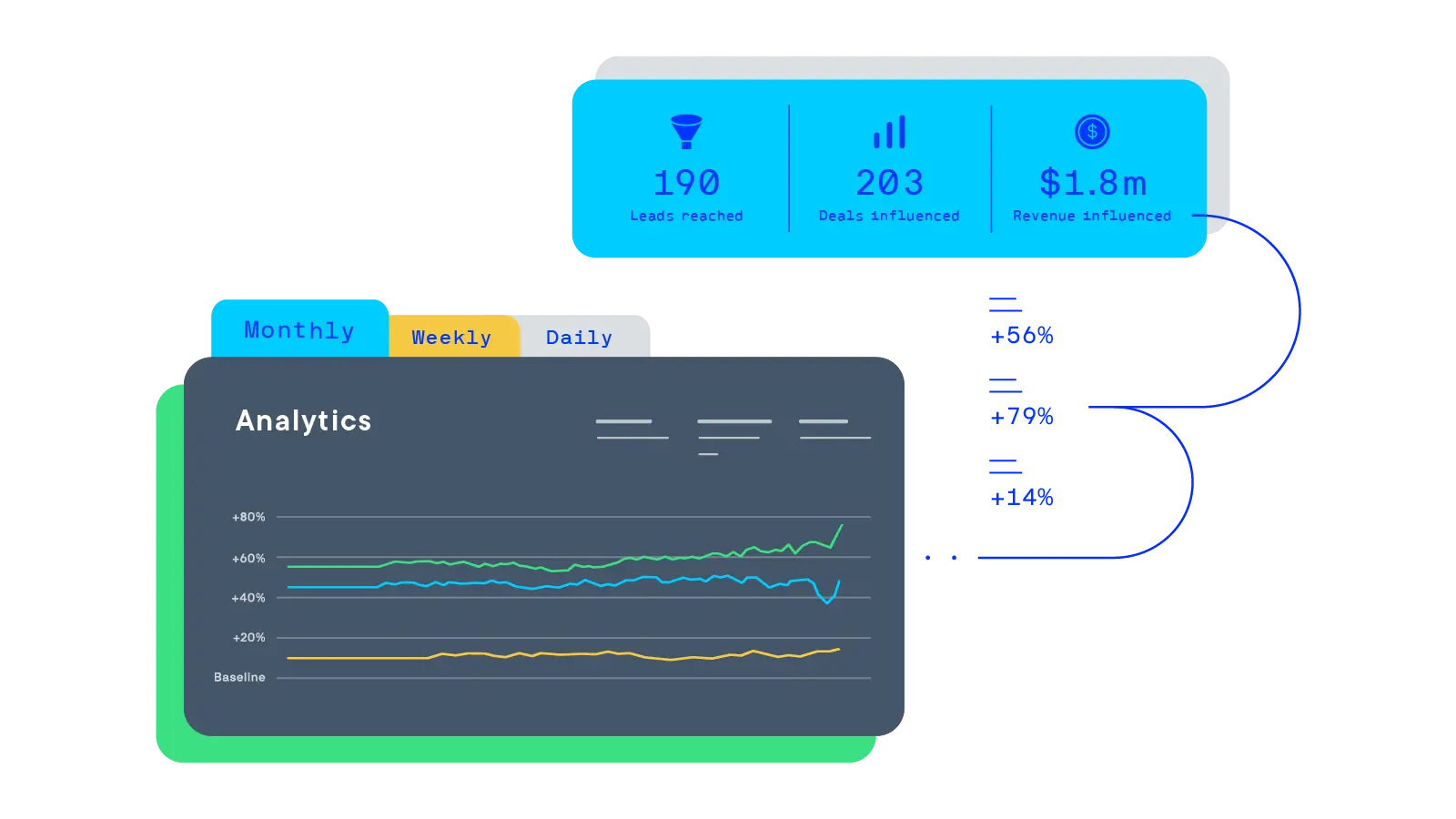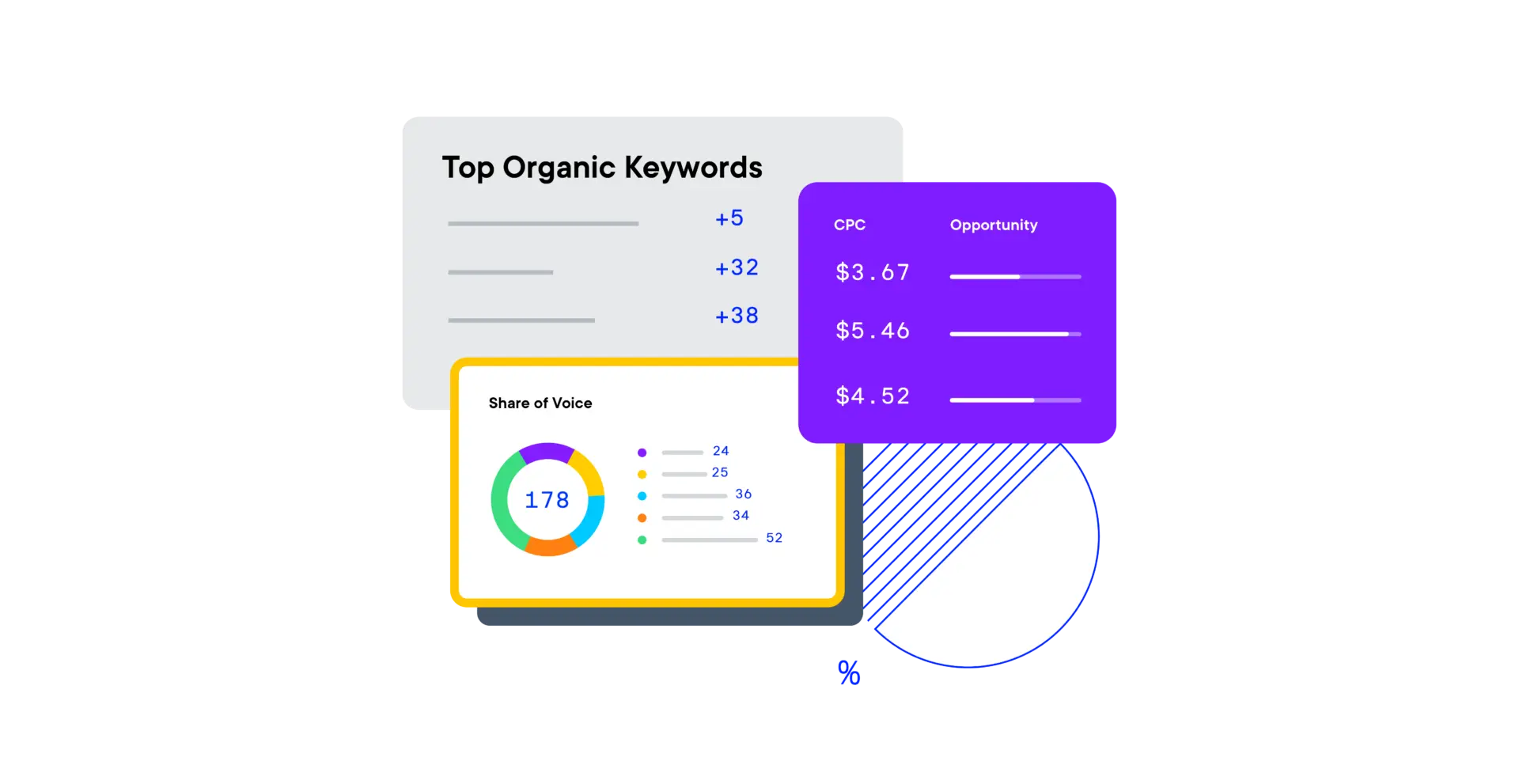Types of content marketing: Important tips, strategies, & formats
There are countless types of content marketing formats. Here are the most important tips and strategies to follow to build brand awareness, and generate leads.

In terms of ROI, content marketing is hard to beat.
Content marketing generates three times as many leads as traditional marketing strategies and costs 62% less to execute.
It’s no wonder B2C and B2B marketers continue to prioritize unique content creation.
You already know blogs are one of the most popular types of content marketing used by businesses, but they’re not the only option.
If you’re just starting or looking to add more variety to your content marketing calendar, keep reading.
In this guide, we share:
- The benefits of content marketing
- Various types of content marketing you can use
- Top content marketing services and tools to boost results
Defining content marketing
The Content Marketing Institute defines content marketing as a strategic approach to marketing that attracts your target audience through the consistent creation and distribution of relevant content.
Ultimately, the steady output of content aims to generate profitable customer action, such as sales.
Unlike traditional marketing tactics, content marketing doesn’t include pitches or self-promotion.
Instead, content marketers give customers free value, usually in the form of information, education, or entertainment.
A comprehensive content marketing strategy typically involves creating assets in a variety of content categories.
Common types of content marketing include:
- Blogs
- Infographics
- Case studies
- Webinars
- eBooks
- Podcasts
Benefits of content marketing
A content marketer’s ultimate goal is to drive sales. But how do they do that?
Content marketers build trust with their target audience through the consistent delivery of high-quality content.
Content marketing lets you build a relationship with prospective customers without pressuring them to make a purchase right away.
By building trust with content, you can increase your sales while reducing your marketing spend.
Here are just a few ways content marketing helps build brand awareness and generate more leads for businesses:
- Content marketing can increase website conversion rates by up to five times
- Content marketers drive 7.8 times more unique website traffic year-over-year
- 95% of B2B customers report that content helps them trust companies
- 61% of consumers have bought something they read about in a blog
According to SEMRush, the top goals for content marketing strategies include:
- Generating more quality leads
- Increasing website traffic
- Improving the brand’s reputation
- Increasing customer loyalty and engagement
Safe to say content marketing can generate returns at every point along the buying process.
Types of content marketing
So, what does a successful content marketing strategy actually look like?
First, a good strategy is a documented one.
It’s even better if you have a dedicated content marketing specialist in charge of planning, executing, and analyzing your editorial calendar.
Secondly, success comes from variation in content type but consistency in delivery. Offering a variety of content helps you appeal to a broader audience and leverage content marketing at various points along your customer journey.
Let’s look at some types of content marketing formats you can use to build up your strategy.
Blogs
Blogging might be one of the first forms of content that comes to mind when you think of content marketing. Bloggers and businesses alike have been using blog content to build and monetize loyal followings.
Blogging is particularly impactful when paired with SEO best practices.
SEO is a staple in any inbound content marketing strategy. Inbound means you bring leads to your website by creating valuable content that appears on search engine results pages (SERPs).
Besides the time it takes to write a blog post, the cost of blogging is exceptionally low. Businesses without a team of writers can choose to outsource writing for their blog posts and still reduce marketing costs.
Tip to make blogs work for you: Focus on long-form content and SEO optimization so you can drive more organic traffic and reduce your ad spend.
Case studies
A case study is a piece of content you create that outlines your success with a particular client.
Case studies are particularly effective in the B2B industry, where purchases usually involve higher costs and more risk.
When you write a case study, highlight your customer first and your product second. In other words, your case study should read like a story about your client that shows your brand as a successful supporting role.
By showcasing your satisfied customers, you show sales prospects that you can deliver positive results for them.
Tip to make case studies work for you: Include specific details about your customer’s success story and always quantify positive results when you can.
E-books
E-books are an excellent way to establish your brand as an authoritative or knowledgeable voice in your industry.
E-books are commonly used as lead magnets to increase subscribers and identify qualified marketing leads.
A business creates an e-book that’s available to download for free and uses a landing page to distribute it. The potential customer needs to subscribe to a newsletter or provide their email address to receive the e-book file.
Someone who has downloaded your e-book has shown interest in your brand or product and can be recorded as a marketing qualified lead.
Tip to make e-books work for you: Include actionable tips in your e-book to help your target audience generate their desired results.
GIFs/memes
Not all content marketing formats need to be long-form expert content. While informational content works well for many businesses, sometimes your consumers just want to be entertained.
That’s where GIFs and memes come into play. A GIF is an image file that can be used to create animated images.
A meme is an image with a text overlay that spreads virally on the internet and social media platforms.
Do the names sound funny? Yes.
Do they work? Also yes.
GIFS and memes reign supreme in the world of viral marketing. Viral marketing is word-of-mouth marketing at its best.
When one person sees a viral post, they share it with multiple people. And it grows exponentially.
The result?
Seemingly instantaneous boosts in brand awareness and engagement on social media.
GIFs and memes work particularly well in B2C social media strategies focused on reaching new audiences.
Tip to make GIFs and memes work for you: Define your brand’s voice, tone, and risk tolerance before publishing GIFs and memes. It’s easy for these viral content categories to stray a little too far off-brand.
Infographics
Informational content, while helpful, can quickly become dull or dense.
If you want to educate an audience with a short attention span (basically anyone on the internet), you can use an infographic to get the job done.
Infographics are creative visual representations of data related to a particular topic.
Marketers use a blend of the following to tell a data-rich story with infographics:
- Images
- Icons
- Data
- Text
- Graphs
- Diagrams
Infographics make a great addition to blog posts, and they’re also excellent for increasing engagement on social media. The added visuals make infographics easy to scan, consume, and share.
Tip to make infographics work for you: Find shareable stats, so when other content marketers reference your infographics, you’ll receive more backlinks and exposure.
Podcasts
Podcasts are digital audio files distributed online, usually in installments. Consumers can download the audio files, listen on your website, or access podcasts on apps like Spotify.
In a world where new video marketing formats are released constantly (we’re looking at you, TikTok), why are podcasts so popular?
Podcasts are an accessible type of content marketing that empowers consumers to get their information while performing other tasks.
Think about it.
You can get information from a podcast while you’re driving, running, or cooking. It’s harder to multitask while reading an e-book or watching a video.
Podcasts were made for people on the go, and who isn’t these days? (Well, barring lockdown restrictions.)
You can use podcasts to generate leads and awareness for your brand, but that’s not all.
Podcasts offer an excellent opportunity to open up new revenue streams by working with sponsors or using affiliate marketing.
Tip to make podcasts work for you: Invite experts on to your show. If you’re just starting with podcasts, this helps you build trust and generate interest with your target audience.
Webinars
If you look back on your college years, what do you miss the most? That’s right — classes.
Okay, maybe not classes. Despite that, 74% of professionals want more training to help them reach their full potential.
People in all industries are registering for webinars to learn new skills, keep up with trends, and figure out how to get the most out of their tech stack.
It’s no surprise that 73% of B2B companies say they generate the most high-quality leads from webinars.
Webinars are a unique opportunity to interact with your target audience while providing value and positioning your brand as a thought leader.
Tip to make webinars work for you: Increase your digital marketing strategy ROI by recording and replaying on-demand webinars for more fundamental topics.
White papers
A white paper is an authoritative report meant to educate readers and help them solve relevant problems by promoting a particular method of action.
Compared to blog posts, white papers are longer (usually 3,000-5,000 words), and they are primarily rooted in research and data.
Furthermore, white papers are downloadable PDF files, whereas blog posts and articles are available as a website page.
Of all of the types of content marketing assets, white papers are the most effective at influencing B2B buying decisions, followed by webinars.
Businesses that outsource content creation will spend more on white papers than blog posts.
White papers cost between $3,000 to $6,000 on average to produce. However, they have a useful lifespan of about one to three years.
Tip to make white papers work for you: Present a new way of solving a common industry problem and back up your claims with research and data.
Video marketing
The effectiveness of video marketing continues to grow in SEO and social media. A whopping 93% of brands that used video on social media got new customers.
Some of the types of content marketing on this list work best for B2B or B2C, but not both. In contrast, video presents opportunities for all kinds of businesses.
As platforms like YouTube and TikTok continue to grow, video marketing will become a requirement for content marketers.
Here are just a few examples of ways you can promote your brand with video:
-
Customer testimonials
-
How-to videos
-
Behind the scenes excerpts
-
Expert interviews
-
Answering customer questions
Consumers place a high value on authenticity, so you don’t need a full professional setup to create videos that generate leads.
Plus, you can take segments from longer videos on your website and repurpose them for platforms such as Instagram or TikTok.
Tip to make video work for you: Post videos in multiple places, such as your website, YouTube, Facebook, and Instagram for maximum reach.
Tips for effective content marketing
Now that you have an arsenal full of content format ideas, here are the top three best practices to get the most out of your content marketing strategy.
Choose quality over quantity
Content marketing is all about building trust. Unfortunately, if you break that trust once, you may never get it back.
So, we recommend always prioritizing content quality over quantity. Choose a publishing schedule that empowers you to share high-quality assets consistently.
You may have to start slow and build up your pace over time, but it’ll be worth it in the long run.
The best content marketing assets continue to generate leads for your business long after you first publish them.
Do your keyword research
One of the main objectives of a content marketing strategy is to generate more brand awareness. You can measure reach by tracking your website traffic.
The best types of content marketing leverage SEO best practices so you don’t have to spend money on ads. It’s essential to do your keyword research before planning out your editorial calendar.
Take the time to find keywords relevant to your target audience and check out your competition. Search engines are getting better and better at scraping different content types to find keywords, even with video.
The more you incorporate keywords into your content creation, the better your results will be as time goes on.
Try content repurposing
Content marketing tactics cost less than traditional ads and promotions, but they still require time and money to create.
To maximize the benefits of your content marketing strategy, it's essential to engage in content repurposing.

Repurposing content helps you maximize your ROI. For example, let’s say you conduct research for a webinar on industry trends.
You can capitalize on your effort by reusing your findings to create blog posts, infographics, and videos.
When you repurpose, it also empowers you to optimize content formats for each distribution channel.
You can keep webinars and blog posts on your website while sharing the same information via video or infographic on social media.
Anytime you create a new content asset, ask yourself how you can take that information and repackage it in another format.
Tools to execute your content narketing strategy
Executing a comprehensive content marketing strategy can be challenging, especially for small businesses that don’t have a full roster of marketing managers.
The good news?
Smaller teams (yes, even teams of one) can implement a successful content marketing strategy as long as you have the right tools to help you.
Here are three tools that help you get the most out of your content marketing plans.
Content marketing platform
A content marketing platform helps marketing teams plan and execute content marketing strategies.
Content marketing solutions include:
-
Marketing calendars
-
Project management tracking
-
Digital asset management
-
Performance tracking
Welcome’s software makes it easy to manage content operations all in one place. Our platform is built to help you keep all of your content organized and for maximum collaboration.

Social media scheduler
Content marketing and social media go together like memes and Instagram. One piece of content can be shared across all of your platforms for maximum reach.
However, as most marketers know, executing social media campaigns can easily take up someone’s entire day. That’s where a social media scheduler comes into play.
Social media schedulers let you plan out your posts up to weeks in advance. Most solutions help you manage editorial calendars for several platforms at once.
When you plan out your social media posts in this way, your team has more time to focus on tasks such as content mapping and content creation.
SEO optimization software
SEO optimization is the difference between generating organic traffic and spending your marketing budget on ads.
You can use SEO tools to find the best keywords for your brand and compare your content with your competitors’.
Welcome integrates SEO features directly into its content marketing platform, including keyword research and real-time content optimization.

Final thoughts: Types of content marketing to use in your calendar
Gone are the days where marketing meant shameless self-promotion. And believe us, your audience is grateful for that.
With content marketing, brands can build genuine relationships with their target audience by creating and giving away value. This, in turn, has led to significant increases in lead generation and customer loyalty. To learn more about software that helps you launch and scale your content operations, explore Optimizely Content Marketing Platform for free, today.

